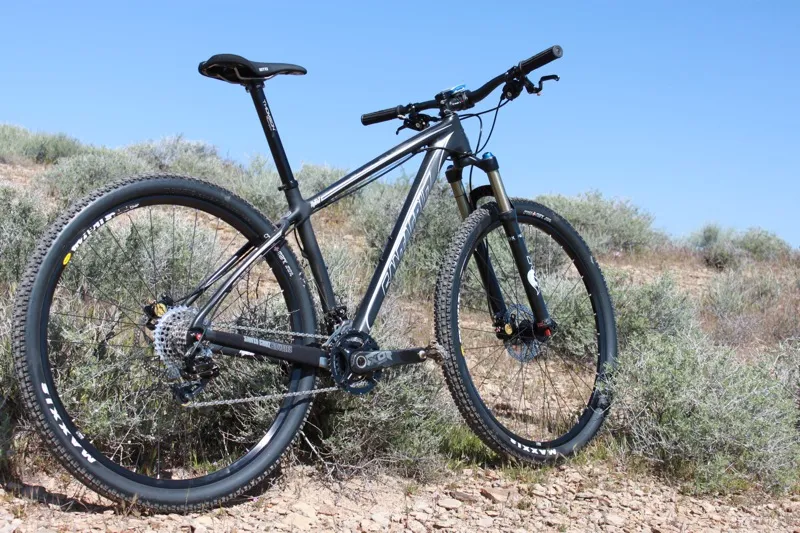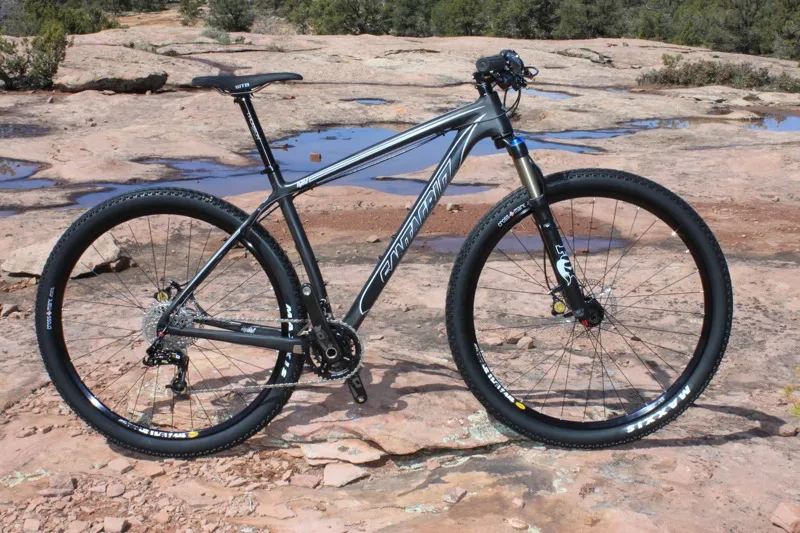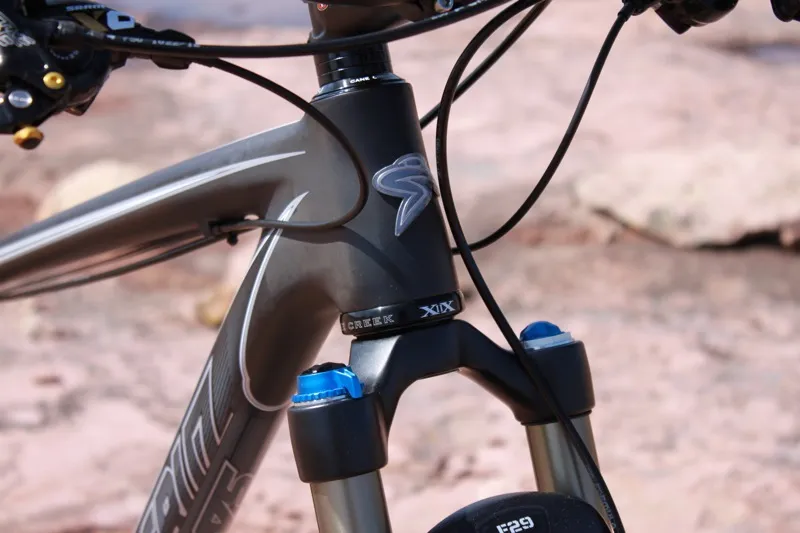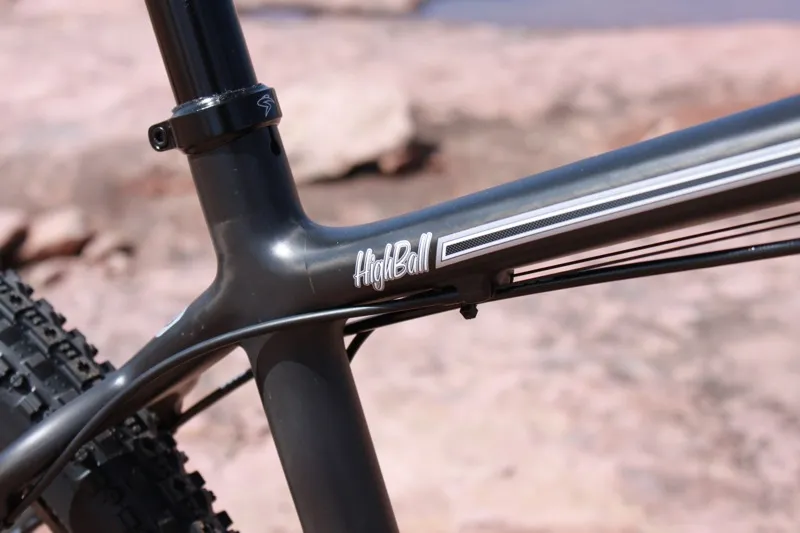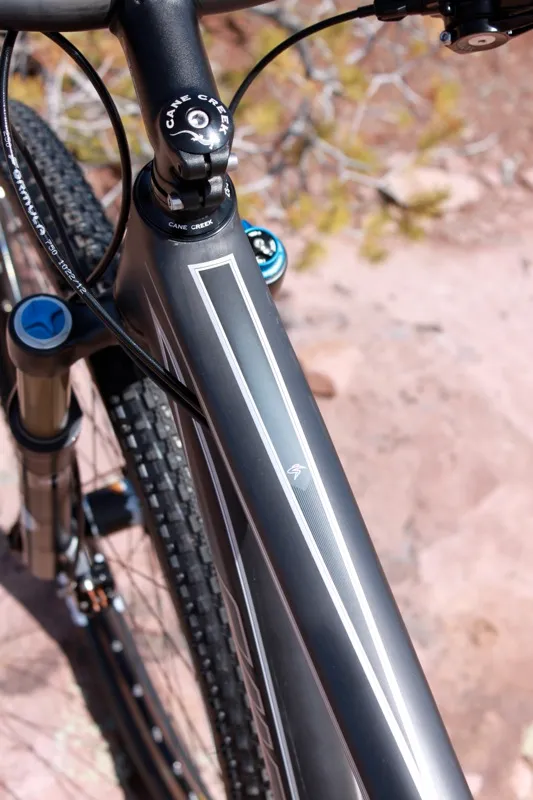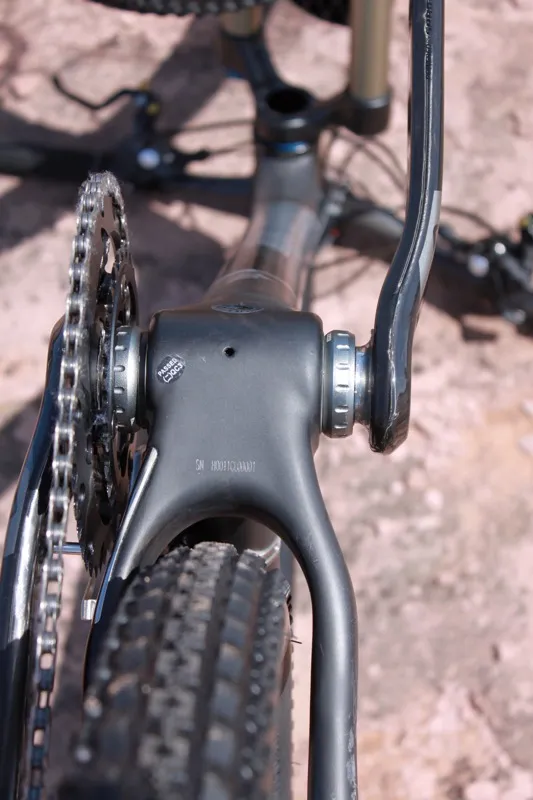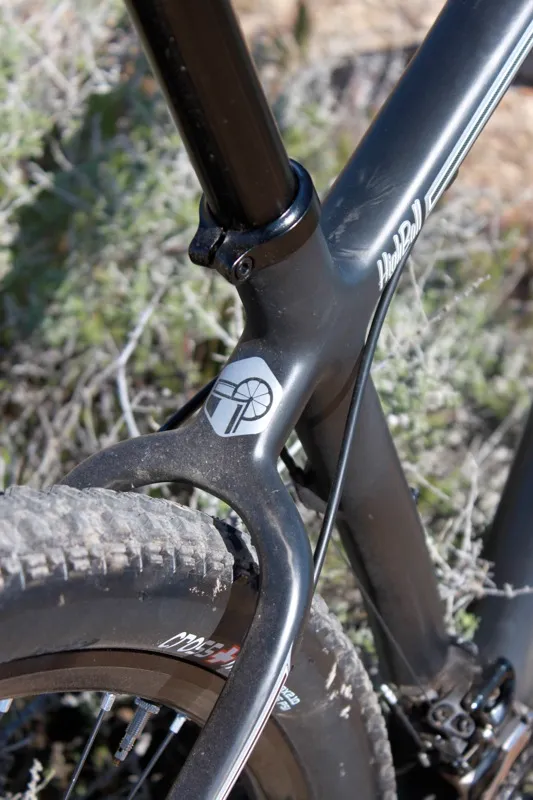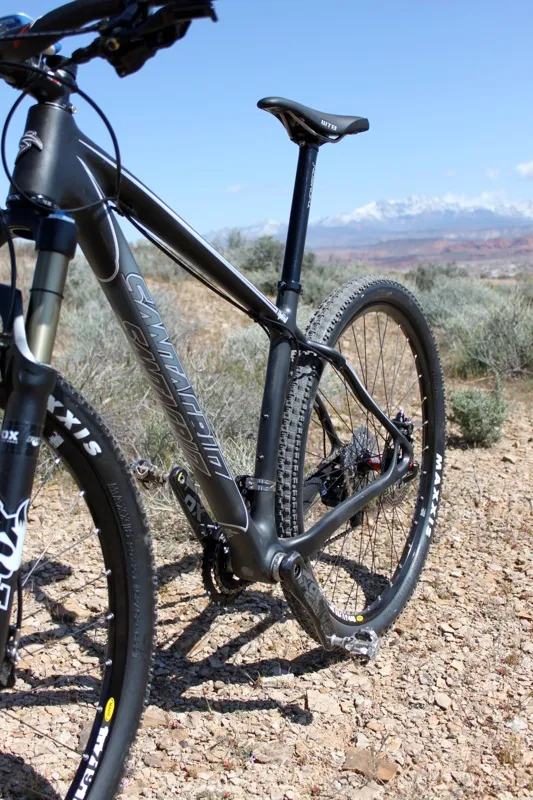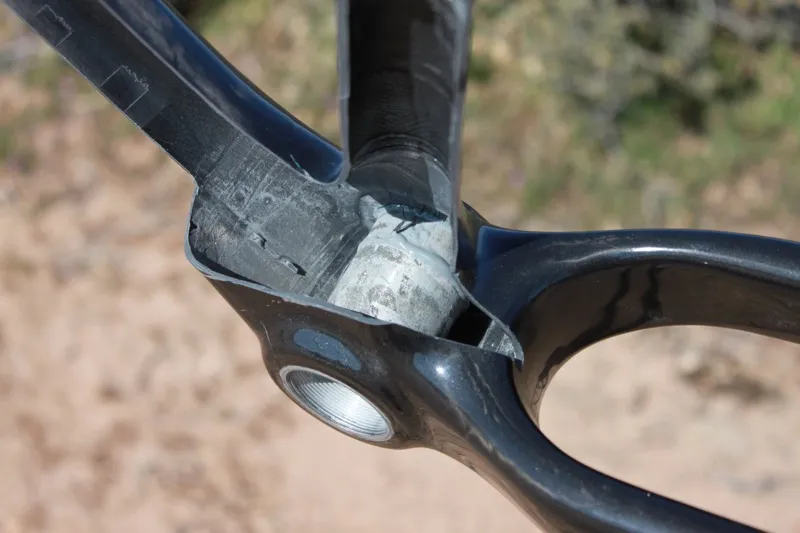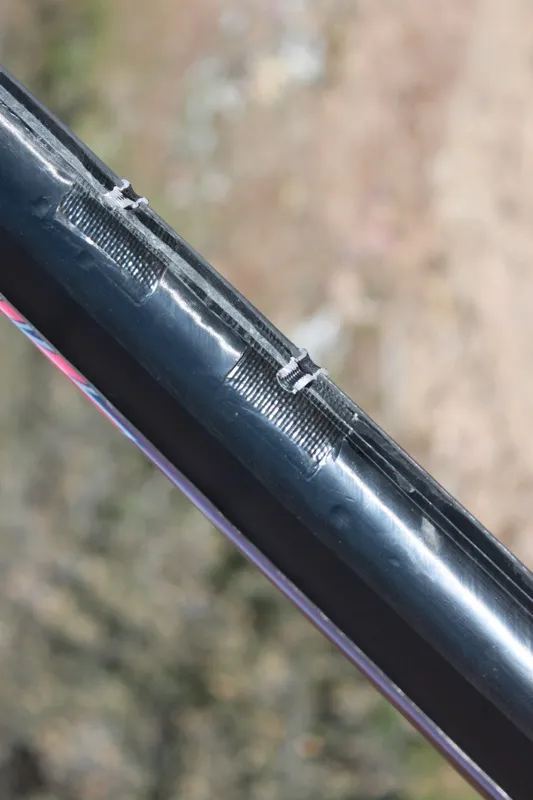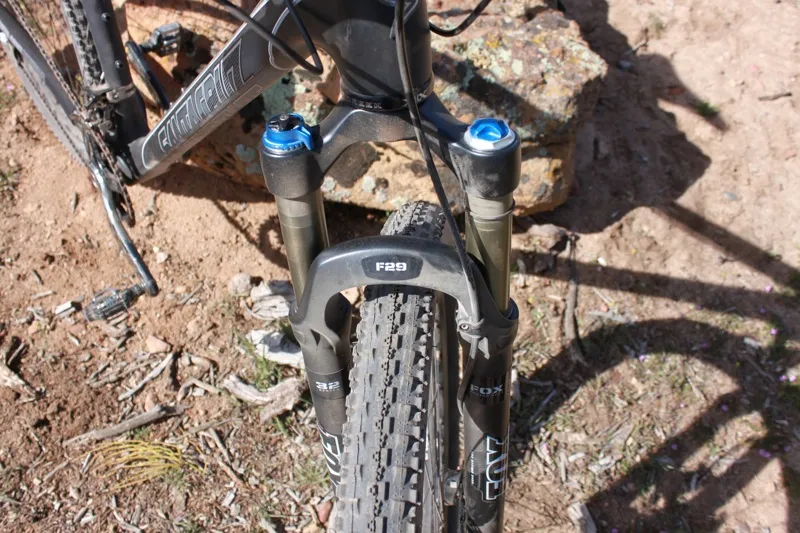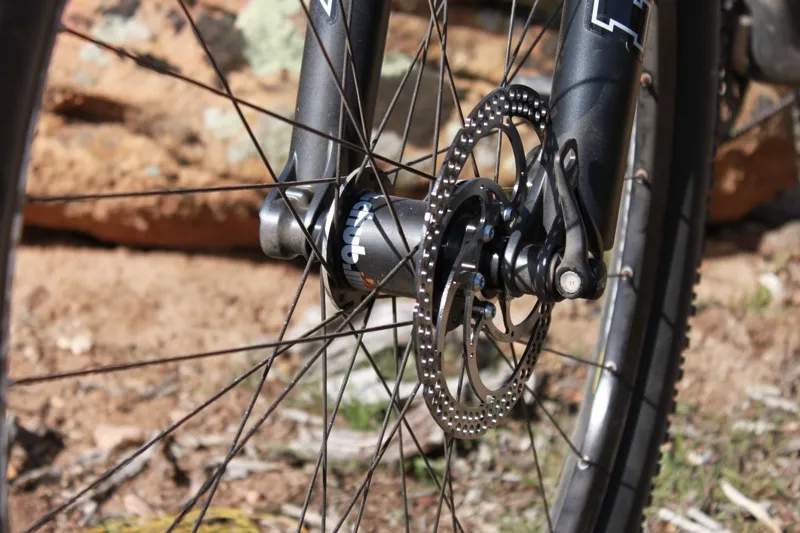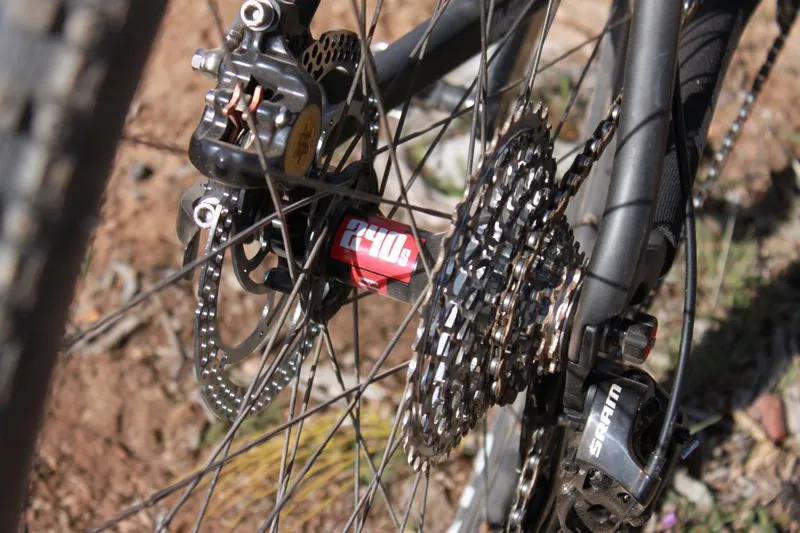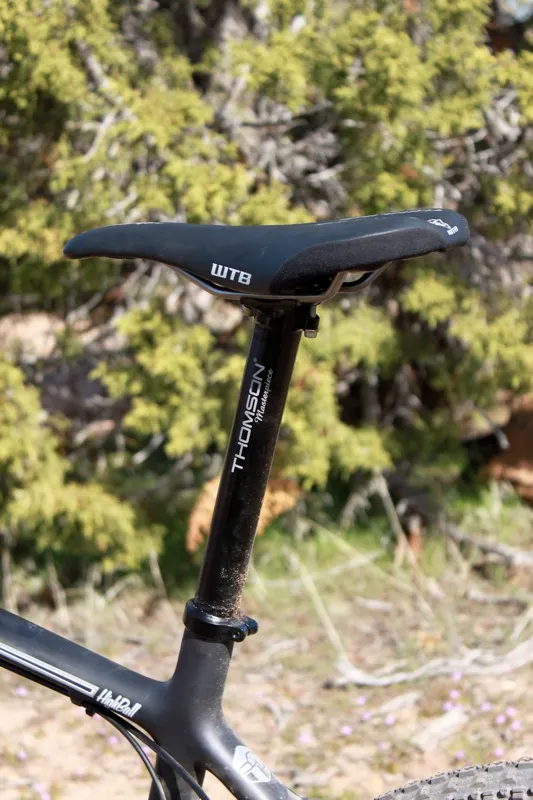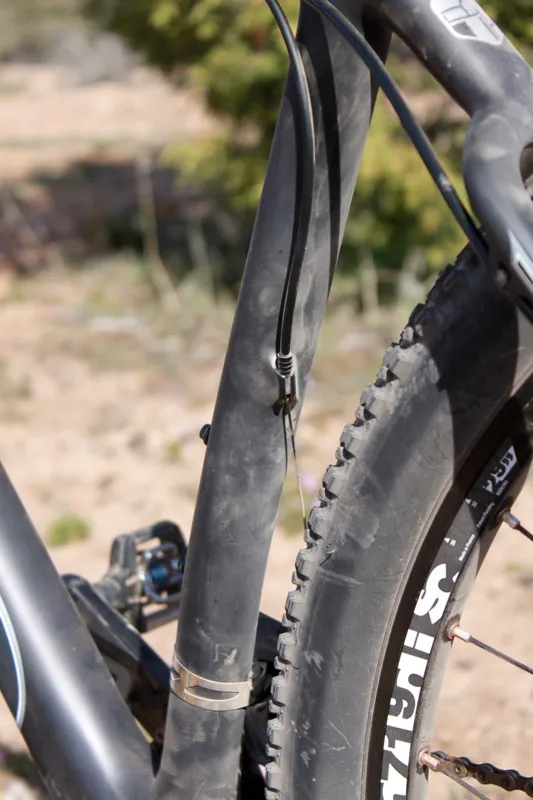The new Highball represents many things for Santa Cruz. It’s their first cross-country hardtail and also their first non-full-suspension bike to be made from carbon fiber and have 29in wheels. First and foremost, though, it's a tool to win races. Throw a leg over the Highball and within a couple of pedal strokes you’ll get what we mean; it only takes a few to get the bike up to speed, even with the big wheels. Any rider looking to pound on the pedals and pound out the miles will feel immediately at home.
Ride & handling: Dialed geometry, super-stiff in steering and pedaling, but a harsh ride
We've reached a point where most manufacturers have nailed the angles that work with 29in wheels – a slacker head angle (compared to first generation big-wheelers), low bottom bracket and short chainstays – and started to produce well mannered bikes, and the Highball is no exception. Yes, it's slower handling than a bike with pure, razor sharp 26in cross-country geometry, but it falls in line with many slightly slacker cross-country racers and shorter-travel trail bikes.
In the true test — riding it — the Highball shines in both tight and twisty walking-speed singletrack and the faster, flowy, bermed out buff stuff. It goes where pointed without too much muscle and just a hint of understeer at higher speeds. Considering its intended use, we were surprised to find that it wheelies and manuals with ease too, likely due to the short chainstays.
From the first pedal stroke the bike squirts forward, with this responsive snap to attention when pedaled giving the first indication of its ultra stiff ride. This stiffness means the Highball offers point-and-shoot steering, thanks also to its 100mm-travel, 15mm through-axle fork. But some in-the-saddle comfort is sacrificed as a result.
The ride is harsher than some of Santa Cruz's rivals' latest offerings, but it also makes the Highball feel fast – something racers will undoubtedly appreciate. The stiffness takes a toll when rides surpass the two-hour mark, so the Highball wouldn't be our first choice for all-day epics. But with 'traditional’ cross-country races rarely lasting for more than an hour-and-a-half these days, the lack of comfort shouldn't be an issue for competitive types.
We raced the Highball extensively in a local short-track series, where we were impressed by its speed. The steering is precise, because of the front-end stiffness, but also stable and appropriately sharp. The Highball exhibits a slight bit of oversteer at slower speeds, but this never caused a problem and allowed the bike to turn as fast as any 29er we’ve ridden yet without massive concessions to overall stability.
The Highball has a rather low bottom bracket (12in) for a 29er. This was a bonus in terms of cornering and stability, and only in extreme circumstances – steep sloped off-camber sections or deep rock gardens – did we have problems with pedal strikes. It’s a trade-off we’ll gladly accept to keep from feeling like we’re riding a circus bike

The big bottom bracket junction offers lots of pedalling stiffness
Part-way through our test we switched from the wheels and inner tubes that came with the bike to DT Swiss’s new Tricon 29er wheelset, run tubeless. This increased overall stiffness and, more importantly, meant we could run lower pressures with less fear of flatting, improving comfort. On a similar note, while we appreciate that Santa Cruz have kept things consistent across their line by speccing a 30.9mm-diameter seatpost, it would be a simple modification to shim the seat tube to 27.2mm and run a carbon fiber post that’s slightly softer than the Thompson Masterpiece on our test bike, again improving comfort.
All told, the Highball is a pure and simple race bike that has the potential to make any weight obsessed cross-country hammer very happy. It's up there with the likes of the Scott Scale 29er and Trek’s new Superfly in a growing group of ultra-light big-wheeled cross-country bikes. “It’s what most people are racing [in the US] these days,” says Josh Kissner, Santa Cruz’s product manager. “You don’t see a ton of full suspension bikes, it’s all 29er hardtails, really.”
Frame: High precision molding
Our medium frame weighed just 2.42lb (1,102g) with all of its peripheral pieces, including seat collar, derailleur hanger and bottle cage bolts. However, weight isn't the whole story; the Highball has been designed with strength and stiffness as key priorities, and has no rider weight limit. The frame is also cleared for use with a 120mm fork. As tested, our medium Highball weighed 21.93lb (9.94kg) without pedals.
The frame is made in the same way as all of Santa Cruz’s carbon bikes, using a style of tooled monocoque molding that allows extreme precision in regards to tube wall thickness. The frame is molded in three sections (front triangle and rear stays) then bonded together. Internally, Santa Cruz have eschewed several design changes that would have made the bike even lighter.

Santa Cruz use a finishing layer of woven carbon in the high-stress head tube area; the head tube itself is closed off with a bonded insert post molding so that headset removal tools can be used without worry
There are no in-molded carbon headset bearing races; instead, Santa Cruz fit the tapered head tube with an inset upper and external lower type headset, citing that the weight to be saved is less than most would expect because of the extra carbon that would be required. There's also a threaded alloy bottom bracket (BB) shell rather than a press-fit one; Santa Cruz believe riders prefer the compatibility the old standard offers. It also means racers can run SRAM’s XX crank with its narrow 156mm Q-factor.
Head tube length is an issue on many 29ers. On the Highball, Santa Cruz say they've specced the shortest head tube possible that will still take a tapered steerer – 100mm on the medium size. If you want a lower front end, there's always the option of running a negative rise stem.
The only issue we had with the Highball frame over the course of our test was the integrity of its derailleur hanger. It seemed like just looking at the willowy piece of aluminum funny caused it to wilt, thus degrading shifting. We ended up straightening it three times, and only after each re-alignment did we realize how bad our shifting had become because of the mis-alignment.
Equipment: Smart (and racy) spec
Our test bike features Santa Cruz’s X0 XC build kit, made up of a SRAM 2x10 X0 drivetrain supplemented with Formula The One brakes, Easton EA90 stem and EC70 carbon handlebar, and a Thompson Masterpiece seatpost. Suspension is handled by a Fox F29RLC tapered steerer fork, while the whole package rolls on a custom 32-spoke wheelset with DT Swiss 240s rear hub, Chub front hub and XR400 rims, finished with Maxxis CrossMark tires.
During the course of our test, we swapped the stock fork and wheels for RockShox's new SID 29 World Cup XX and a set of DT Swiss Tricons. Steering stiffness was reduced with the new fork but it saved over 180g – a worthy trade-off for the bike’s intended use. The wheels were also lighter, but they felt stiffer laterally too and their wider rim provided better tire performance, both in the respect of being tubeless and offering a wider profile and improved contact patch.
Regardless of our changes, all of the supplied parts performed quite well; our only real gripe is the difficulty of converting the XR400 rims to tubeless (DT make a tape-style conversion kit). The drivetrain nailed every shift (when the hanger was straight) – though given the bike’s purpose, we wished for the noticeably narrower stance of the XX crank.
Easton’s new handlebar deserves mention for a very solid feel and comfortable bend and sweep. At 685mm it's wide for a race bar, but this means you can run a shorter stem while keeping a similar reach (you’re extending further laterally rather than forward). The result is better breathing comfort and steering performance, and in this case the ability to raise the front wheel easily.

Formula's The One brake is fixed to an entirely carbon brake mount, save for two T-style inserts in the brake mount, which allow facing
Formula’s The One brakes offer excellent power and modulation. However, their clamps don’t mate as neatly with the bar as Avid’s do. This only becomes an issue when you try to squeeze an additional lockout lever onto the bar. We also took issue with the range of The One’s reach adjustment — finding the lever too far out even when the adjuster was cranked to the inward stop.
The Highball frame comes in two colors — matte carbon grey or gloss carbon red — and costs US$1,899/£1,699. Complete bikes start at $3,099/£3,149 with Santa Cruz’s RXC kit.
